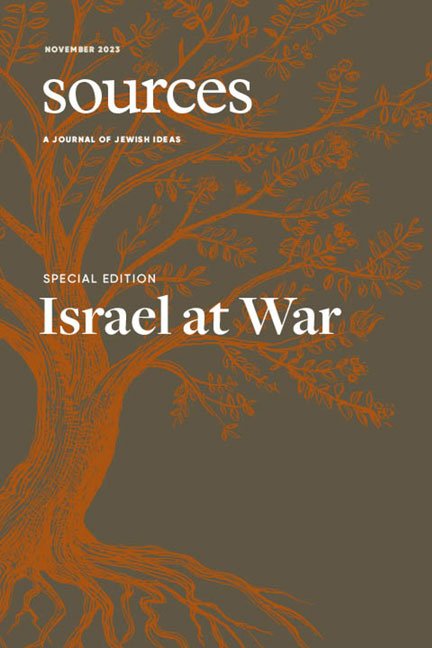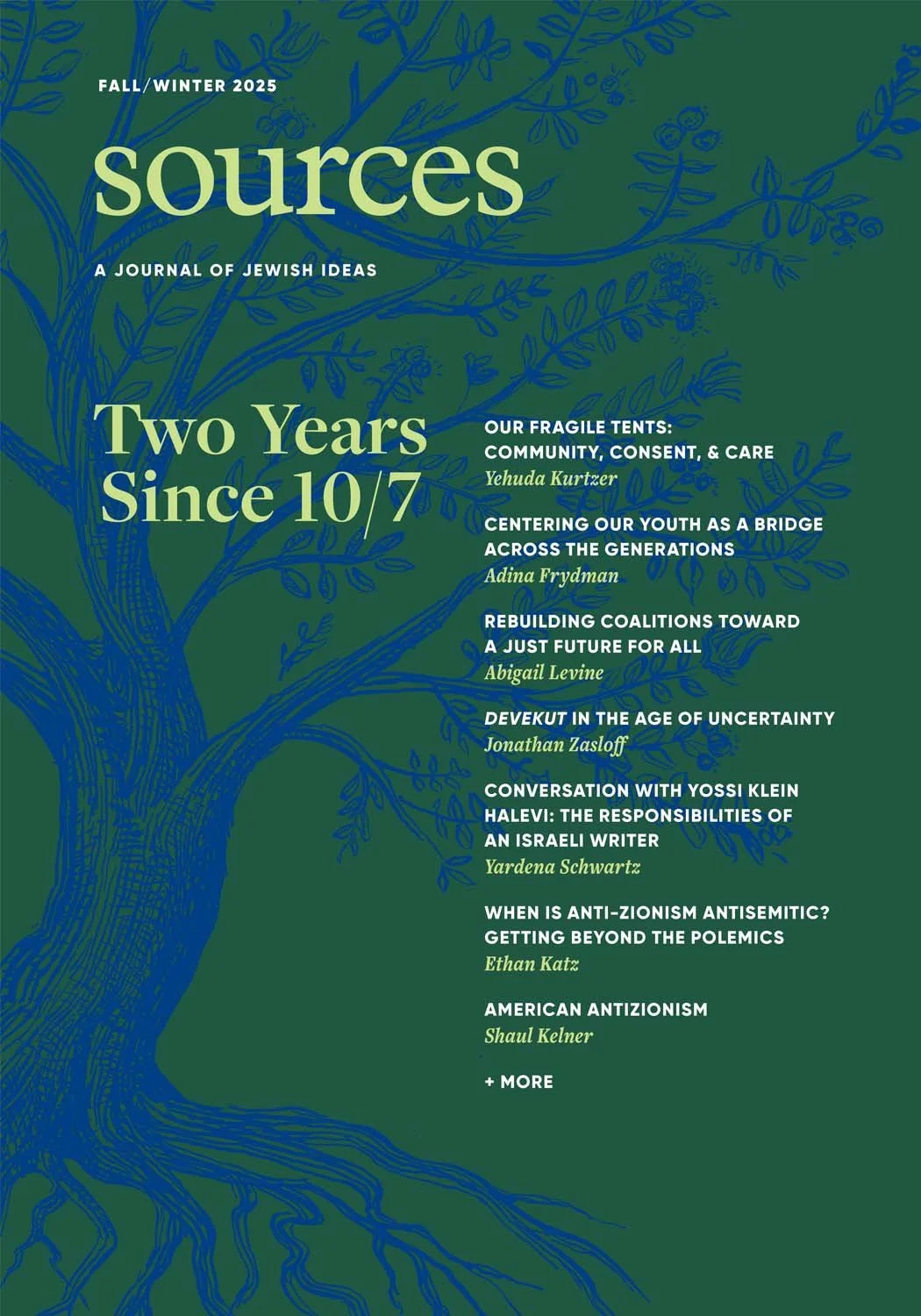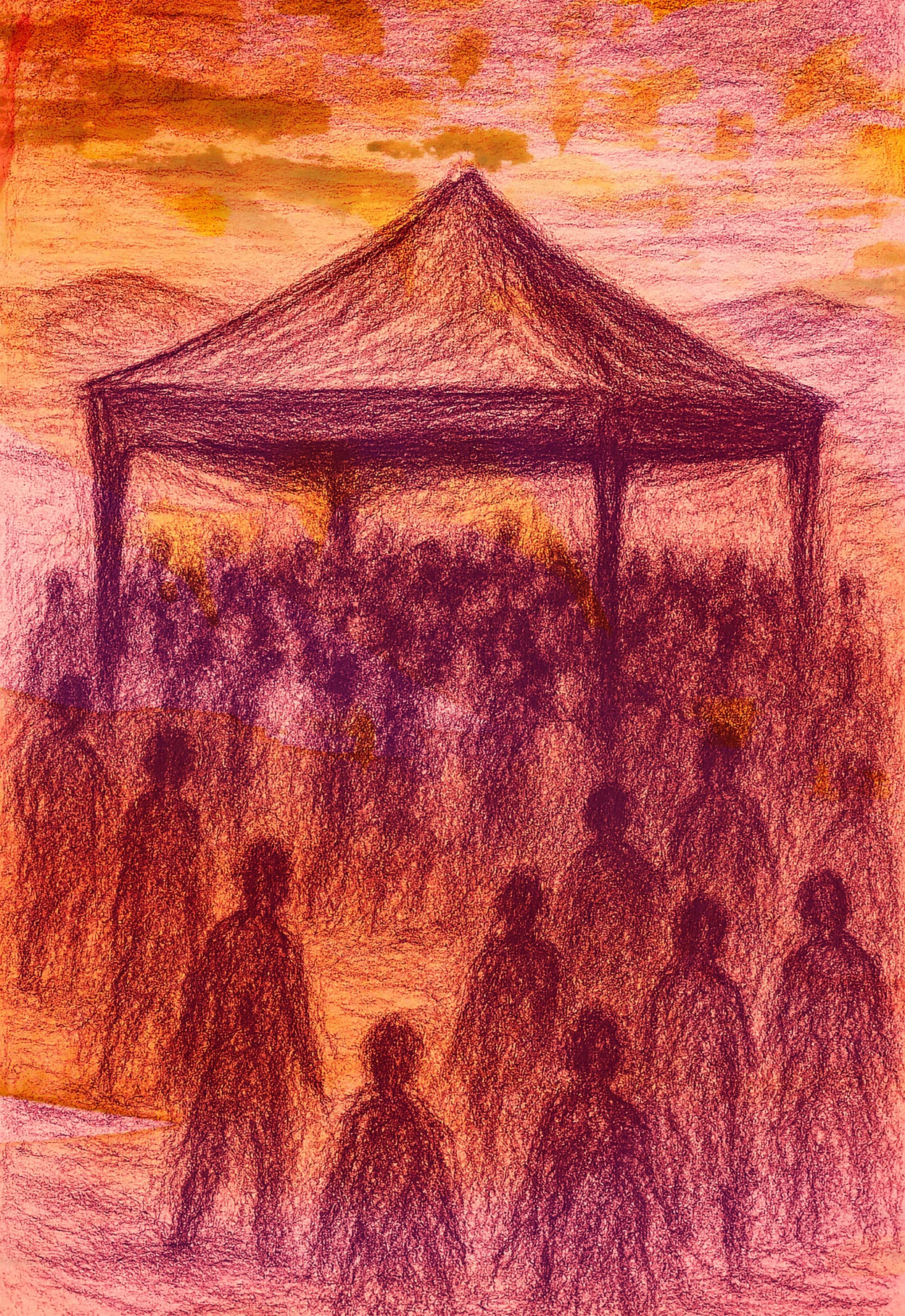Israel at War
FROM THE EDITOR
For a PDF version of this article for reading and printing, click here.
The premise of Dara Horn’s 2018 novel Eternal Life is simple: a first-century Jerusalem Jew, Rachel, makes a bargain with God. The deal she makes, not long before the Roman siege of the city, saves the life of her son Yohanan, who is desperately ill; in exchange, she and Yohanan’s father give up their mortality. Yohanan grows up to be the Yohanan ben Zakkai of rabbinic legend, carried out of the city in a coffin to meet with the Roman general Vespesian, who gives him permission to lay the foundations of rabbinic Judaism in the town of Yavneh.
I’ve been thinking a lot about Rachel in the weeks since Hamas’s attack on southern Israel and, in particular, about the character’s struggles to understand her son Yohanan’s greatest choice, namely, to let go of the second Temple and to invest instead in Torah, the teachings and the story of the Jewish people. Lying on his deathbed, he tells his mother:
“When Vespasian asked me what he could give me, I knew exactly what to ask for. I asked for permission for the Torah scholars to be protected near their garrison in Yavneh. That way, no matter what happened to Jerusalem, there would still be people who could teach the Torah in the future. That way the Torah would be safe.… I did what I could. I did what was possible.”
“You’re like a child! You saved your favorite book!” [said Rachel.]
“Yes! Because nothing matters but the story!… I saved what mattered most in the world… I saved the future.”
The persistence of Jewishness as a way of life, as a worldview, and as an identity, over so many centuries, owes plenty to conditions beyond Jewish control. Think, for example, of the Persian Emperor Cyrus’ decision to allow Jews to return to Jerusalem and rebuild their Temple—the very one the Romans would later destroy—or, more recently, how Jews have thrived under the freedom of religion promised by the American Bill of Rights.
But, even so, the transformation of Judaism from a religion of prophecy and sacrifice into one of prayer and study in the years before and after the destruction of the Second Temple tells us a lot more about survival than any other explanation. At this and other key inflection points, Jews reinvested in Jewishness not only by continuing to teach their story but by changing it so that it would make sense in a new reality. The rabbinic Judaism that—whether you embrace it or reject it—is the foundation of Jewish practice today was made possible because it was made necessary.
Love Jewish Ideas?
Subscribe to the print edition of Sources today.
I know I am not alone in feeling seismic shifts in the meaning of Jewishness in the weeks since October 7. Jewish history suggests we are right that this moment is indeed changing us, as a people, as other tragedies of this scale have done. Jewish history also suggests that we cannot remain passive but must choose to take control, to whatever degree we can, of that change. We must reshape at least as much as we are being reshaped. Like Yohanan, we must ensure that Torah is taught, even and especially, as we bend the narrative arc of the Jewish people to fit a new reality.
The eight articles in this special digital-only edition of Sources seek to do just that: to find meaning in looking at the Jewish past, present, and future anew, cognizant of our pain and ready to rethink and respond.
The issue opens with Yehuda Kurtzer’s “moral map” for the moment: an outline of four commitments that guide diaspora Jews as we walk in a terrain that is both familiar and wholly unfamiliar. None of these commitments is brand new; they will all resonate and yet, as he argues, at the same time, they are newly pressing.
Two authors consider the role of rabbinic leadership after October 7. Mishael Zion offers a moving account of how he and other Israeli rabbis responded to needs of their fellow citizens, sharing the blend of biblical, rabbinic, and Israeli texts that they used as a means of providing spiritual and practical support. Katja Vehlow, an American rabbi and hospital chaplain, draws on Jewish sources as she reflects on being present with people in pain as she herself was in pain, and on chaplaincy as a multifaith endeavor.
Several of our writers focus on Jewish texts, each in a different way. In her examination of the biblical narratives of Job and Lamentations, Leora Batnitzky finds a vocabulary for the emotional confusion of the last weeks, while Mikhael Manekin finds clarity as he makes a case for prioritizing the release of hostages with his reading of rabbinic, medieval, and contemporary Jewish legal texts. Finally, Shlomo Brody considers Jewish laws of warfare—many of them written in a time when there was neither a Jewish state nor a Jewish army—and the moral concerns they raise.
Geoffrey Levin places today’s Israel-Hamas War in historical perspective, and, in looking at how American Jews reacted to earlier Israeli wars, he makes some predictions about the near-term future. Finally, Sarah Wolf addresses her piece to her fellow Jewish Studies professors, making a plea for remaining engaged in academic life despite the risks posed by increasing antisemitism on so many university campuses.
These are turbulent times punctuated by moments of moral clarity and moments of utter uncertainty. On the Day After, whenever it arrives, we will be different than we were on the Day Before. Join me in taking thoughtful responsibility for that project.
Claire E. Sufrin
For a PDF version of this article for reading and printing, click here.



